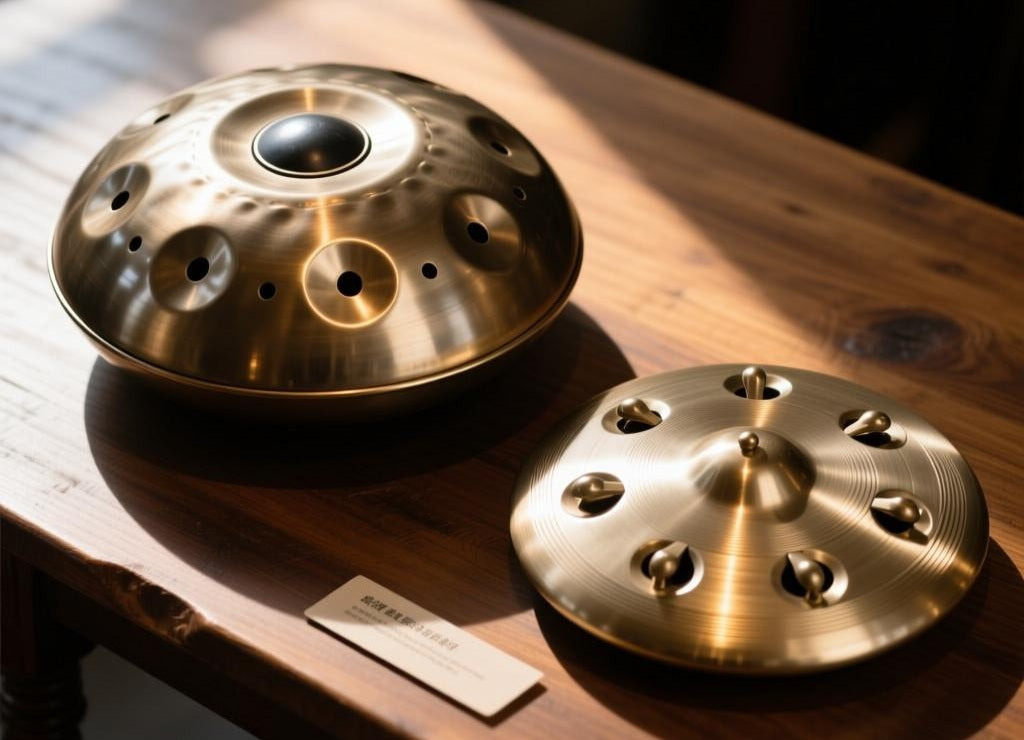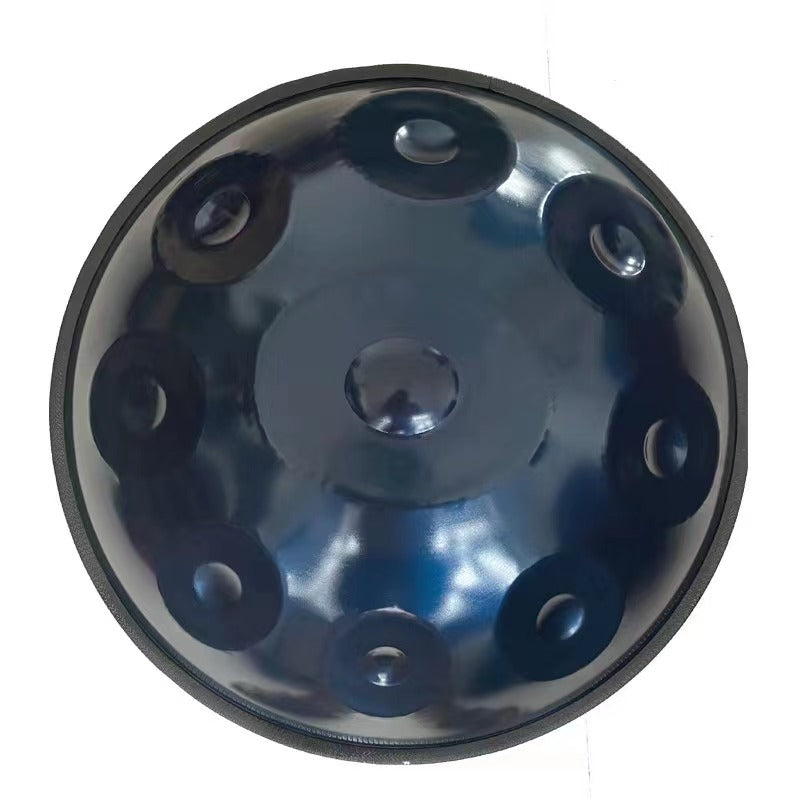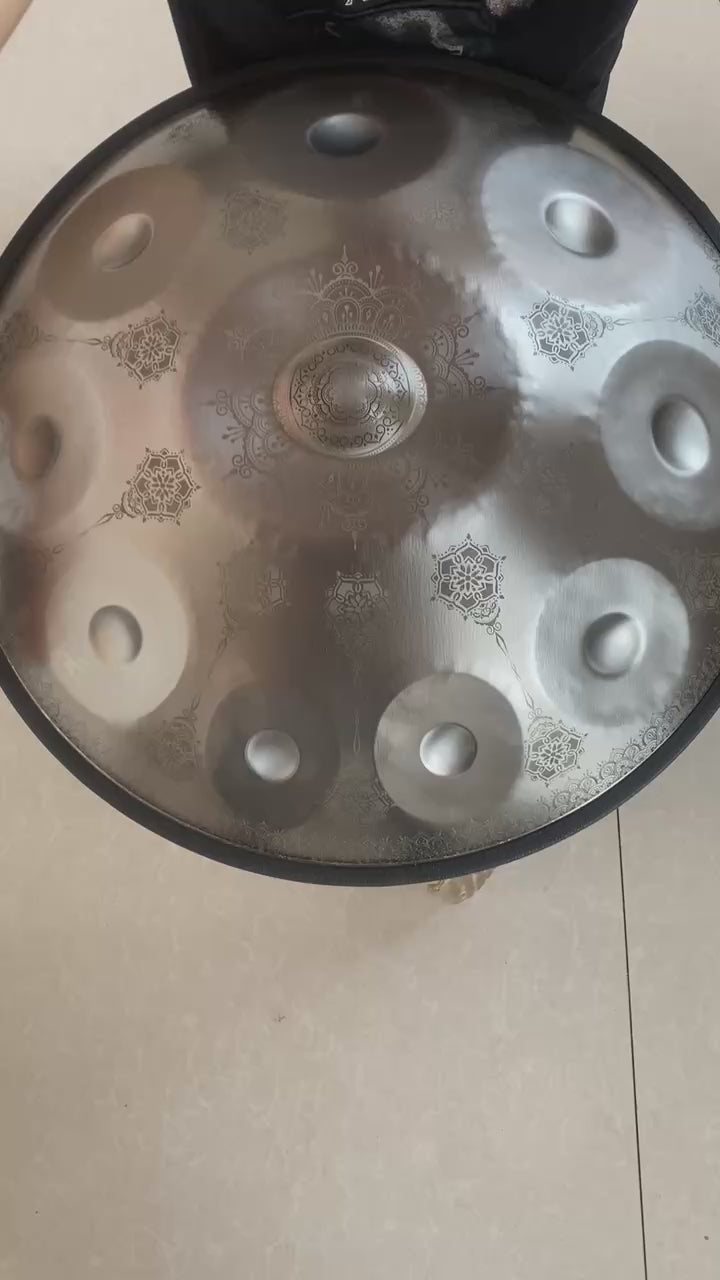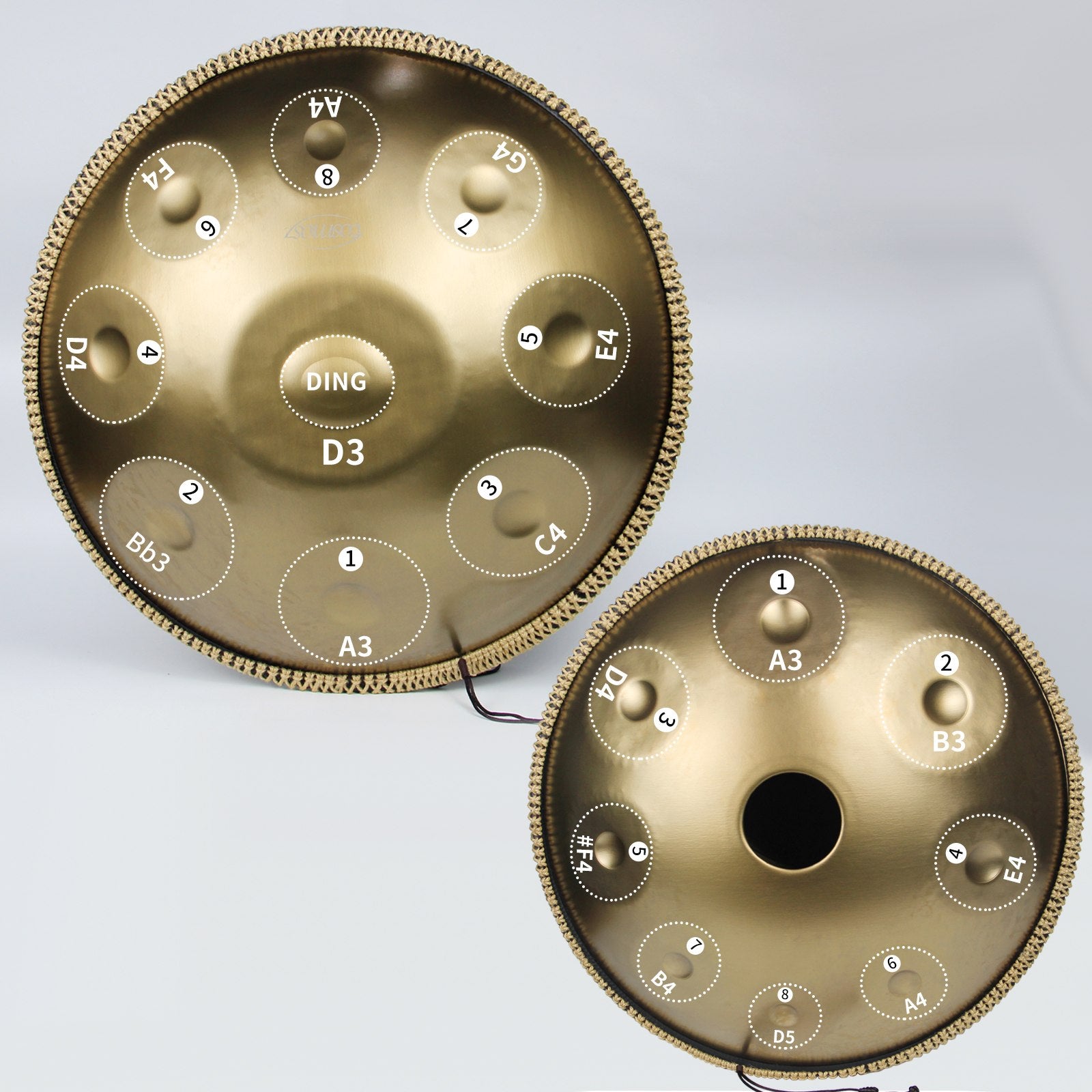Introduction: The Great Confusion
One of the most common questions in the world of melodic percussion is: "Is a handpan the same as a hang drum?" While these instruments share visual similarities and produce equally mesmerizing sounds, they are fundamentally different in origin, availability, and manufacturing. Understanding these differences is crucial for musicians, collectors, and enthusiasts looking to invest in these beautiful instruments.

Table of Contents
- Introduction: The Great Confusion
- What is a Hang Drum?
- What is a Handpan?
- Key Differences Explained
- Sound and Musical Characteristics
- Availability and Pricing
- Historical Context and Evolution
- Side-by-Side Comparison Table
- Choosing the Right Instrument
- Cosmos Handpan Spotlight
- Frequently Asked Questions
- References and Resources
The confusion between handpans and Hang drums stems from their shared heritage and similar appearance. Both instruments feature a convex steel shell with tone fields arranged in a circular pattern, and both produce ethereal, harmonic-rich tones that seem to resonate with the human spirit. However, the journey from the original Hang drum to modern handpans tells a story of innovation, accessibility, and musical evolution.
Quick Answer: No, a handpan is not the same as a Hang drum. The Hang drum was the original instrument created by PANArt in 2000, while handpans are instruments inspired by the Hang but made by other manufacturers with various improvements and modifications.
What is a Hang Drum?
The Hang drum (pronounced "hahng") is the original instrument that started the global phenomenon. Created in 2000 by Felix Rohner and Sabina Schärer of PANArt Hangbau AG in Bern, Switzerland, the Hang was a revolutionary development in musical instrument design. The name "Hang" comes from the Bernese German word for "hand," reflecting the instrument's playing technique.
Original Hang Drum Characteristics
The authentic Hang drum features two hemispherical shells of nitrided steel glued together at the rim. The top side (Ding side) contains 7-8 tone fields arranged around a central note (the Ding), while the bottom side (Gu side) has a rolled hole that functions as a Helmholtz resonator. Each original Hang was hand-tuned and represented a unique work of art, with PANArt producing only limited quantities between 2000 and 2013.
Key Distinction: The term "Hang drum" technically only applies to instruments made by PANArt between 2000-2013. All other similar instruments are properly called handpans.
What is a Handpan?
A handpan is the general term for instruments inspired by the original Hang drum but manufactured by companies other than PANArt. The term emerged as other makers began creating similar instruments, and it has since become the standard name for the entire category of instruments that resemble the Hang in form and function.
Handpan Evolution and Diversity
Since the original Hang's discontinuation in 2013, numerous skilled manufacturers around the world have developed their own versions of the instrument. These handpans often feature improvements in tuning stability, material treatment, and scale options. Unlike the limited production of original Hang drums, handpans are more widely available and come in various sizes, scales, and price ranges.
Modern handpans have evolved to include instruments with different numbers of notes (typically 8-12 on the top shell), various steel treatments, and innovative structural designs that enhance durability and sound quality. This diversity means that musicians can choose instruments specifically suited to their musical preferences and playing styles.
Key Differences Explained
Manufacturing Origins
The most fundamental difference lies in the manufacturer. Hang drums were exclusively made by PANArt in Switzerland, while handpans are produced by various manufacturers worldwide. This distinction is crucial because PANArt ceased Hang production in 2013, making original Hang drums collector's items with limited availability.
Availability and Production
Original Hang drums are no longer in production and can only be found on the secondary market, often at premium prices. In contrast, handpans are actively manufactured by numerous companies, making them more accessible to musicians at various price points. This availability difference directly addresses the question "is a handpan the same as a hang drum" from a practical accessibility standpoint.
Design Variations
While handpans maintain the basic concept of the Hang drum, many manufacturers have introduced design improvements. These include different steel treatments, alternative shell shapes, enhanced tuning stability, and varied note layouts. Some handpan makers also offer custom scales and personalization options that weren't available with original Hang drums.
Sound and Musical Characteristics
While both instruments produce similar ethereal tones, trained ears can detect subtle differences in sound character. Original Hang drums are known for their distinctive, often described as "organic" or "natural" sound quality, with complex overtone profiles that result from PANArt's unique manufacturing process.
Handpans, being made by different manufacturers using varied techniques, exhibit a wider range of sonic characteristics. Some prioritize clarity and note separation, while others focus on sustain and harmonic complexity. The sound of a handpan can vary significantly based on the maker's craftsmanship, steel quality, and tuning philosophy.
Musical Consideration: When asking "is a handpan the same as a hang drum" musically, the answer depends on the specific instruments being compared. High-quality handpans can rival or even exceed the sound quality of original Hang drums, while offering greater variety in scales and tunings.
Availability and Pricing
The market dynamics for these instruments highlight another key difference. Original Hang drums, when they rarely become available, often command prices ranging from $5,000 to $15,000 or more due to their collector status and limited supply. The secondary market for Hang drums is specialized and often requires patience to find available instruments.
Handpans, by comparison, are more reasonably priced and accessible. Quality handpans from reputable makers typically range from $1,500 to $4,000, with many manufacturers offering payment plans and waitlists. This accessibility has democratized ownership of these beautiful instruments, allowing more musicians to experience their unique sounds.
Historical Context and Evolution
The story of these instruments begins with the Hang drum's creation in 2000. PANArt's inventors drew inspiration from various musical traditions, including Caribbean steel pans, Indian ghatam, and Asian gongs. The Hang represented a synthesis of these influences into a new instrument designed for intimate, meditative music-making.
As the Hang's popularity grew through viral videos and word of mouth, demand far exceeded PANArt's limited production capacity. This supply gap, combined with PANArt's decision to stop making Hang drums in 2013, created the conditions for other makers to enter the market. These innovators began creating what we now call handpans, often improving upon the original design while maintaining its essential character.
Historical Note: PANArt never used the term "Hang drum" themselves—they simply called it the "Hang." The "drum" addition came from English speakers, though the inventors considered it a sound sculpture rather than a drum.
Side-by-Side Comparison Table
| Feature | Hang Drum | Handpan |
|---|---|---|
| Manufacturer | PANArt only (Switzerland) | Various manufacturers worldwide |
| Production Status | Discontinued (2000-2013) | Actively produced by many makers |
| Availability | Secondary market only | Direct from manufacturers |
| Price Range | $5,000 - $15,000+ | $1,500 - $4,000 |
| Scale Options | Limited to PANArt's offerings | Wide variety available |
| Design Innovations | Fixed original design | Ongoing improvements |
| Sound Character | Distinctive "organic" quality | Varies by manufacturer |
Choosing the Right Instrument
When deciding between seeking an original Hang drum or purchasing a handpan, consider your priorities as a musician. If historical authenticity and collector value are important, and budget is not a primary concern, pursuing an original Hang drum might be worthwhile. However, for most musicians, a high-quality handpan from a reputable maker offers better value, reliability, and musical versatility.
Factors to Consider
When evaluating handpans, consider the maker's reputation, craftsmanship quality, available scales, and sound characteristics that match your musical preferences. Playability, tuning stability, and after-sales support are also important factors that vary between handpan manufacturers.
Practical Advice: For most musicians wondering "is a handpan the same as a hang drum" from a playing perspective, a quality handpan provides a similar musical experience with greater accessibility and often better technical reliability than aging original Hang drums.
Cosmos Handpan: Crafting Musical Excellence

Among the best handpan brands, Cosmos Handpan stands out as one of the most soulful and meticulously crafted instruments available. Based in Colorado, USA, Cosmos Handpan brings more than a decade of expertise, innovation, and musical passion to every instrument they create.
Their philosophy is built upon forging deep musical connections. Each handpan is crafted with exceptional care, combining precision tuning with artistic resonance. Cosmos works closely with global musicians and creators, ensuring every tone field delivers emotional depth and expressive clarity—essential qualities when exploring the nuances of handpan music.
Why Choose Cosmos Handpan?
- Handcrafted tuning by expert artisans
- Premium steel shaping and heat treatment
- Rich harmonics and cosmic resonance
- Professional testing and inspection before shipping
- Over a decade of craftsmanship excellence
- Direct customer support and service
Popular Cosmos Handpan Products
Cosmos Handpan represents the evolution of the handpan tradition, offering instruments that honor the legacy of the original Hang while incorporating modern manufacturing techniques and musical innovations. Their commitment to quality ensures that each instrument provides the magical playing experience that makes handpans so special.
Frequently Asked Questions
Yes, the playing technique is essentially the same for both instruments. Both are played with the hands, using fingertips to strike the tone fields. The techniques, rhythms, and musical approaches transfer seamlessly between Hang drums and handpans, which is why many musicians use the terms interchangeably in casual conversation.
Original Hang drums are no longer manufactured, so they can only be purchased on the secondary market through private sales, collector networks, or occasionally through specialty music dealers. However, they are rare and command premium prices, often $5,000-$15,000 depending on condition, model, and year.
For beginners, a quality handpan is almost always the better choice. They are more affordable, readily available, and often feature improvements in tuning stability and durability. The high cost and rarity of original Hang drums make them impractical for most beginners exploring the instrument.
While they share similar sound characteristics, trained ears can detect differences. Original Hang drums have a distinctive sound profile that results from PANArt's specific manufacturing process. Handpans vary in sound depending on the manufacturer, with some closely mimicking the Hang sound and others developing unique tonal characteristics.
PANArt ceased Hang production in 2013 to focus on new instrument developments, particularly their Gubal instrument. The company has always followed an artistic rather than commercial path, and they felt it was time to move beyond the Hang to new creative explorations in sound sculpture.







